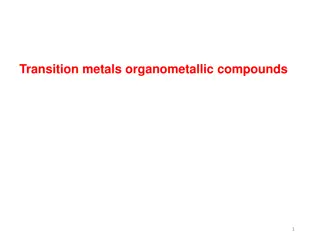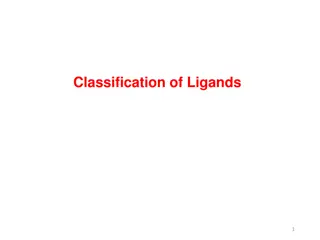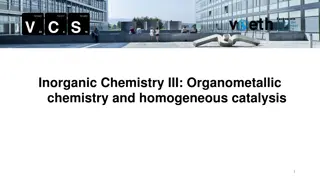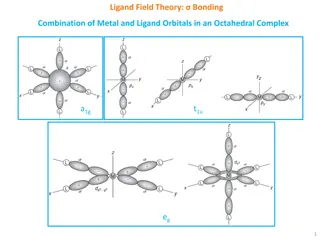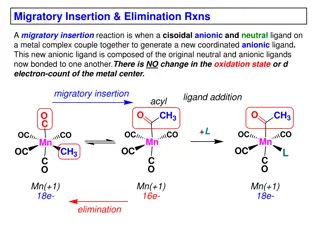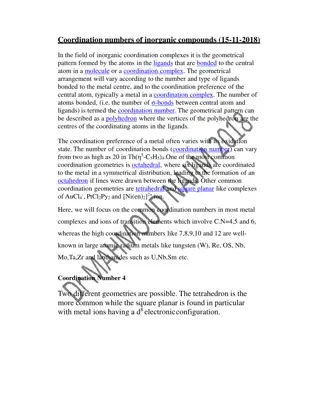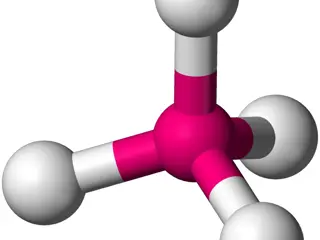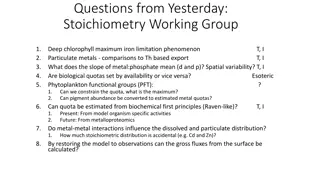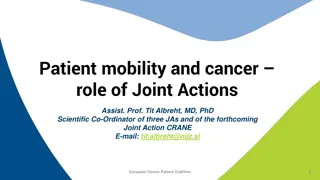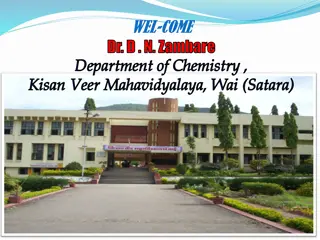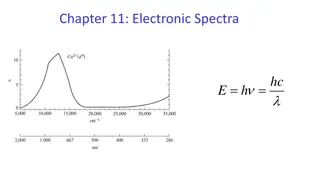Role of Transition Metal Complexes in Cancer Treatment
Transition metal complexes, such as platinum (II) compounds like cisplatin and carboplatin, have shown significant efficacy in treating various types of cancers. These complexes offer a promising approach for combating cancer with reduced side effects. Additionally, new generation compounds like picoplatin are designed to overcome acquired resistance to traditional chemotherapeutic agents. Advances in metal-based drugs continue to revolutionize cancer treatment strategies.
Download Presentation

Please find below an Image/Link to download the presentation.
The content on the website is provided AS IS for your information and personal use only. It may not be sold, licensed, or shared on other websites without obtaining consent from the author.If you encounter any issues during the download, it is possible that the publisher has removed the file from their server.
You are allowed to download the files provided on this website for personal or commercial use, subject to the condition that they are used lawfully. All files are the property of their respective owners.
The content on the website is provided AS IS for your information and personal use only. It may not be sold, licensed, or shared on other websites without obtaining consent from the author.
E N D
Presentation Transcript
. .
Introduction Metal as anticancer Transition metal as neurological drugs Transition Metal as anti Transition Metal complexes as anti Agent conclusion Introduction Metal as anticancer Transition metal as neurological drugs Transition Metal as anti- -diabetic agent Transition Metal complexes as anti- -infective Agent conclusion diabetic agent infective
Metal complex or coordination compound is a structure consisting of a central metal atom, bonded to a surrounding array of molecules or anions. Sophus Jorgensen in Denmark synthesized metal conjugates for the first time in the mid 1870 s. In 1893 the major breakthrough in this field was occurred when Alfred Werner investigated a series of compounds, which contained cobalt, chlorine and ammonia.
Platinum (II) complexes drugs since long. Among them cisplatin has proven to be a highly effective chemotherapeutic agent for treating various types of cancers. Cisplatin also known as cis-DDP i.e diamminedichloroplatinum (II). It is used for the treatment of testicular cancer, epithelial ovarian cancer, gestational trophoblastic tumors, and small cell lung cancer as well as for cervical, nasopharyngeal, esophageal, and head and neck cancers. Platinum (II) complexes has been used as anti cancer Cisplatin, (cis-[PtCl2 (NH3)2], Str of cisplatin
Carboplatin is second generation drug which have lesser side effect. is effective in the treatment of ovarian carcinoma, lung, head and neck cancers, oxaloplatin of colorectal cancer, which is resistant to cisplatin. Carboplatin; ; oxaloplatin is clinically approved for the treatment oxaloplatin
Picoplatin Is also known as dichloride. is a new generation sterically hindered platinum cytotoxic compound that provides a differentiated spectrum of activity against a wide range of human tumor cell lines and an improved safety profile. It is designed to overcome acquired resistance to cisplatin in vitro and in human tumor xenografts. Picoplatin (cis-C6H10CL2N2Pt) Is also known as azane azane; ; 2-methylpyridine platinum(2+) Str of picoplatin
Some copper compounds such as [Cu (thp)4][PF6] exhibits even 40-fold higher cytotoxicity than cisplatin. The selectivity is higher than the one observed at cisplatin or oxaliplatin the drug applied in colorectal cancer treatment. Anticancer activity is exhibited by copper (I) complexes possessing pyridine-type ligands (pyridine, bipyridine, phenanthroline etc.) or such where copper(I) ion is coordinated to phosphine ligands
Some compound exhibits activity from 2 to 19 times higher than cisplatin for investigated cell lines (e.g. for breast cancer cell line). Polynuclear copper (I) complexes, possessed in their coordination sphere both pyridine- type and phospine-type ligands.
More than 2 - 8% of worlds population is suffering from diabetes. Scientists are looking for alternative approaches for the treatment of diabetes. Control of the glucose level in the blood plasma has been achieved by administration of vanadium and zinc inorganic salts. Vanadium complexes toxic, with improved solubility and lipophilicity. There are a number of vanadium complexes that have been developed, all of which have insulin-mimetic properties. Chromium among patients with diabetes but do not show any significant effect on glucose metabolism in healthy individuals. Higher zinc intake risk of diabeties. of vanadium and zinc in form of Vanadium complexes with organic ligands have proved to be less Chromium supplementation significantly improved glycemia Higher zinc intake has also been associated with a slightly lower
Silver have been used for years as anti microbial agents. Has low toxicity as compared to other transition metals. Silver nitrate is still given to the infants to prevent the development of opthalmia neonatorum. One of the most commonly used compounds of silver is silver (I) sulfazine infections. Chlorohexidine- Silver Sulfadiazine is an anti infective metal complex against catheter infections in vivo. Organometallic complexes of Pt, Rh, Ir, Pd, and Os with active organic molecules have been reported to exhibit trypanocidal activity . An increasing amount of data showing the beneficial use of zinc (Zn) in treating diarrhea continues to emerge from epidemiological and clinical trials. Nitrogen containing macrocyclic complexes of Manganese (II) have shown anti microbial activity. Many manganese complexes have been screened against a number of pathogenic fungi and bacteria to evaluate their growth and potential. is silver (I) sulfazine; it is used to treat severe burns to prevent them from bacterial
Recent advances in medicinal inorganic chemistry gives significant prospects for the utilization of metal complexes in the development anticancer drugs. Platinum complexes cisplatin has proven to be a highly effective chemotherapeutic agent for treating various types of cancers. Besides the established use to treat arthritis, gold complexes exhibit anticancer property. Since higher concentrations of copper is a common trademark of many human tumors, targeting tumor cellular copper with copper chelating agents emerged as an exciting new approach in cancer therapy Antiproli-ferative activity for cervical cancer cells was proved for copper complexes. Ruthenium complexes with antitumor activity are also emerging rapidly. Since metals are endowed with unique properties that are absent in conventional carbon-based drugs, the positive trend in anticancer drug discovery can be continued for the design of new metal based drugs.
The use of transition metal complexes as therapeutic compounds has become more and more pronounced. These complexes offer a great diversity in their action; they do not only have anti-cancer properties but have also been used as anti-inflammatory, anti- infective and anti diabetic compounds. Development of transition metal complexes as drugs is not an easy task; considerable effort is required to get a compound of interest. Beside all these limitations and side effects transition metal complexes are still the most widely used chemotherapeutic agents and make a large contribution to medicinal therapeutics in a way that is, unimaginable in few years back.



